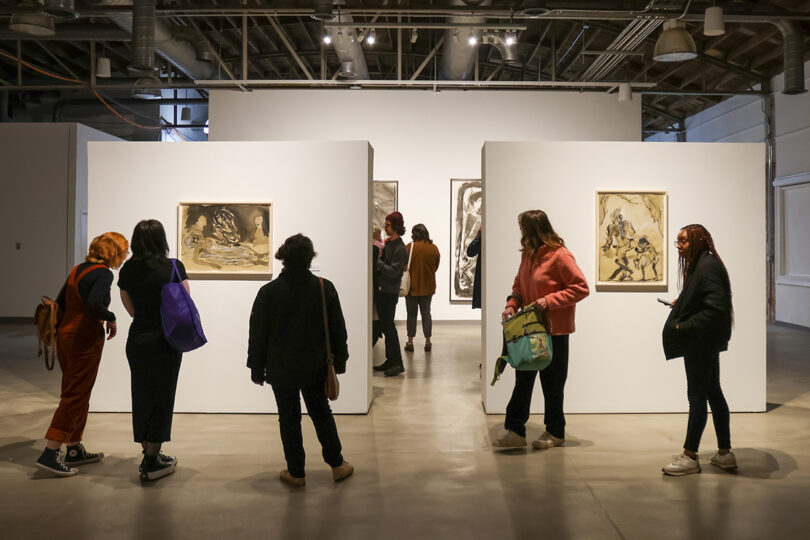A new exhibition at the Athenaeum of recent works on paper by internationally acclaimed American artist Kara Walker, examining themes such as complicity, racism, misremembered histories and the violence that undergirds the legacy of the South, is on display through March 25.
The University of Georgia’s downtown contemporary art gallery presents a guided tour of “Kara Walker: Back of Hand,” the first-ever solo exhibition of Walker’s work in Georgia, Jan. 28 at 4 p.m. The conversational tour is open to all and will be led by curator Katie Geha.
“Our opening reception for ‘Kara Walker: Back of Hand’ was a gratifying success for visual art in Georgia, and we want to continue to share this exhibition with the larger community,” said Katie Geha, director of the Athenaeum and curator of the exhibition. “The first Walker solo exhibition in the state of Georgia, ‘Back of Hand’ is a museum-level achievement of talent and stature that celebrates this seminal Georgia-raised artist who has made her mark on the art world.”
Walker moved to Stone Mountain from Stockton, California, when she was 13 and received her bachelor’s in fne arts at the Atlanta College of Art and Design in 1991 before pursuing an M.F.A. at the Rhode Island School of Design. By the age of 28, Walker was awarded the MacArthur “Genius” Fellowship, making her one of the youngest recipients of this extraordinary accolade in history.
Currently based in New York, Walker is best known for her candid investigation of race, gender, sexuality, and violence through silhouetted figures that have appeared in numerous exhibitions worldwide. The body of work in this exhibition represents her continued practice in drawing, working in watercolor, gouache, ink and graphite to create a series that calls forth the past at once mythological and real, ancient and contemporary. According to Walker, “I am always reflecting on the state of current events and the overlap of the historical and the mythic.”
Walker draws from a variety of influences in this recent work, recalling the political sketches of Goya, the caricatures of Daumier and the “exotic” spectacle presented in the paintings of Gaugin. Two suites of work on display from her ongoing series “Book of Hours,” started during the pandemic, have multivalent references that stem from medieval illuminated manuscripts to the actual time Walker spent creating the work to the uncanny, out-of-time sensation many people endured during the early months of the pandemic.
The practice of drawing for Walker is a hopeful, grounding activity. “Sitting down to make an intimate drawing is a conversation, a way of listening to what’s grumbling inside my body,” Walker said, “and an attempt to transmit, nonverbally, an experience of being.” Two very large scale almost mural-like drawings, “The Ballad of How We Got Here” and “Feast of Famine,” both completed in 2021 and shown for the first time, present a new direction for Walker. Through a tangle of scrawled texts that fill the large paper, cut paper figures affixed to the ground seemingly dance and whirl across the page. Through the chaos of words, Walker indicates to the viewer that history and its attendant interpretations are anything but neat. Instead, Walker presents history without moral or, as she explains, “To demand exactitude in the pursuit of a historical truth is to go where no mind can venture and return whole.”
This exhibition is supported by a gift from the Lupin Foundation.








